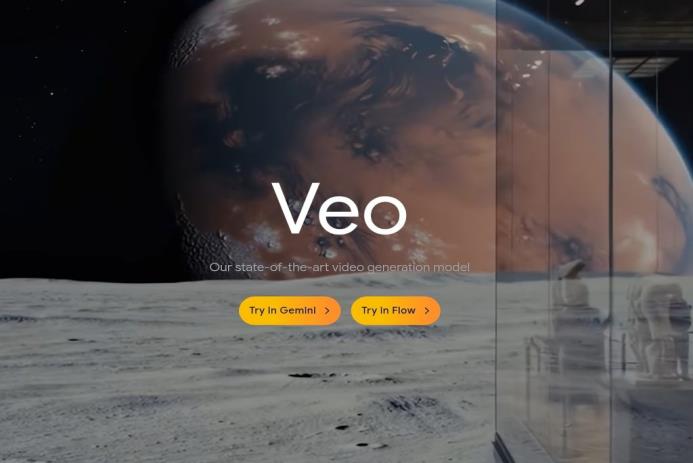
Google Veo 3: Powerful AI Video Creation Now Available on Vertex AI
- 30 October, 2025
What is Veo 3 and why it matters
Google’s Veo 3 is its most advanced AI video generator, now broadly available on the Vertex AI platform. There’s also a lean, quick-turn sibling called Veo 3 Fast aimed at fast iterations and prototyping. From what I’ve seen, the real point isn’t just that it can spin up slick-looking clips — it’s that it collapses weeks of coordination (talent, location, sound, post) into minutes of machine-driven production. That changes how teams plan campaigns, test creatives, and ship content.
How Veo 3 changes video production
If you’ve ever parked a video idea because budgets, schedules, or technical overhead made it unrealistic, Veo 3 is built to remove many of those roadblocks. The model produces 1080p video with synchronized voice and lip movement, generates sound and effects in tandem with visuals, and can output dialogue in multiple languages natively — which makes scaling to international markets less of a logistical nightmare.
What struck me is how this shifts the bottleneck. It used to be access to crews and edit suites; now it’s creative strategy and guardrails. You can produce more iterations, faster. But that also means you need sharper curation.
Real-world use cases
- Design platforms: Canva’s integration brings Veo into a familiar editor, lowering the learning curve for non-specialists. Designers don’t have to become VFX artists overnight — they can prototype motion assets directly where they already work.
- Creative agencies: Agencies such as BarkleyOKRP have re-made earlier campaigns with Veo 3 to get tighter lip-sync and audio-video cohesion. It’s not just cheaper — sometimes it’s qualitatively better for specific ad formats.
- Localized advertising: eToro’s experiment — 15 AI-generated ad variations across markets — shows how a single concept can be adapted quickly while maintaining emotional resonance. That’s the kind of scale brands have been chasing for years. Learn more in our guide to AI-driven advertising.
Key features of Veo 3 and Veo 3 Fast
- Create scenes with sound: Video and audio are generated together so dialogue lines up with mouth movements, and ambient effects come bundled with visuals. No awkward mismatched ADR.
- High-definition output: 1080p makes assets ready for many marketing channels — think web hero videos, product demos, social feeds.
- Native multilingual dialogue: You can generate dialogue in different languages without reshoots, which is huge for global campaigns.
- Animate still images: A planned feature will let you turn a single photo into an 8-second animated clip using a text prompt — handy for quick promos, hero loops, or social cards.
Safety, provenance, and enterprise readiness
With capability comes responsibility. Google has baked enterprise-level safeguards into Veo 3:
- Embedded provenance: Each frame carries an invisible SynthID watermark to help trace origin and reduce misuse. It’s not a silver bullet, but it’s a meaningful signal for downstream platforms and publishers. For a deeper look at provenance and the implications for publishers, see deepfake environmental impact.
- Indemnity for generative AI: Google offers legal protections for businesses using the service — an important reassurance for brands and agencies operating at scale and worried about IP or misuse claims.
Numbers that show traction
The appetite for AI video is real: roughly 70 million videos have been created with Google’s tools since May, and businesses produced over 6 million videos after getting early access. Those are headline numbers, sure, but they underline both broad consumer interest and rapid enterprise adoption. In short: people are using it, and at scale.
Practical example: A hypothetical campaign
Picture a sustainable shoe brand launching a seasonal push. The team drafts a tight script: morning routines, product close-ups, a zippy tagline. In one day they generate four 30-second cuts, each localized with different voice talent and language. They animate the hero product shot into an 8-second looping clip for social. Results? Faster A/B tests, far lower production costs, and localized ads that still feel human. I’ve seen workflows like this decrease turnaround dramatically — but, and this is important, they still need a human eye for tone and brand fidelity.
Tips for getting the best results
- Start with a clear script: Short, specific prompts give tighter visuals and cleaner edits. Vagueness yields muddy output — trust me.
- Use reference images or style notes: Want a warm, filmic look or hand-painted textures? Provide samples or mood words. It anchors the model.
- Iterate with Veo 3 Fast: Use the fast mode to test ideas rapidly, then move to full Veo 3 for final high-quality renders.
- Check provenance needs: If you’re releasing commercially, understand SynthID watermarking and Google’s legal guidance to stay compliant. Also consider broader AI video sustainability when planning large-scale generation.
Limitations and considerations
Veo 3 does a lot, but it’s not a magic wand. It can stumble on highly complex multi-camera setups, bespoke stunt choreography, or VFX that need precise physics. Also, watermarking helps provenance — but it doesn’t replace editorial judgment. Human review is still essential to avoid cultural missteps, deepfake risks, and tone issues in localized content.
Where to try Veo 3
Veo 3 is available through Google Cloud’s Vertex AI for creators and enterprise teams. If you’re a smaller studio or designer, integrations like Canva’s let you experiment without deep platform knowledge. Handy for rapid prototyping. For context on other AI tools in the same space and browser-based workflows, check our piece on OpenAI Atlas.
Further reading and sources
For deeper technical detail on Vertex AI and generative models, start with Google’s Vertex AI documentation. For practical context and case studies, look to industry coverage and agency statements. [Source: Google Vertex AI documentation] [Source: industry coverage and agency statements]
Note: I used a mix of real examples and a hypothetical campaign to show how Veo 3 fits into production workflows. From my experience, combining rapid iteration with a final high-quality render saves time and money — but you still need human oversight to nail nuance and tone.







